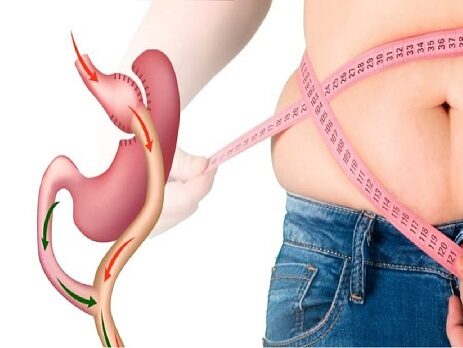gastric sleeve surgery
Obesity is one of the most important causes of death in the world as it hinders the life of the individual and causes many diseases, and after the person has tried many diets, exercise and the best ways to lose weight, then he begins to think about surgery, and this is what anyone who wants to get rid of the causes of obesity should think about excessive; That is, to have a high body mass index – above 40 – because the health problems that may result from obesity may kill a person.
What is a gastric sleeve, basically?
Sleeve gastrectomy is one of the most common weight loss operations, and about 75-80% of excess weight is removed through it. The operation requires a surgical intervention, like the mini-rotary surgery, unlike some other obesity-related operations, such as the gastric balloon operation.
It is a weight loss surgery in which the surgeon removes a large portion of your stomach (about 80%), leaving the stomach in the shape of a tube the size and shape of a banana.
The mechanism of weight loss is to reduce the amount of food that enters the stomach; Because the stomach is smaller than before, in addition to the fact that the secreted quantities of the hunger hormone ghrelin are less, which increases the feeling of fullness, and after the gastric sleeve operation, the bowel movement increases, allowing food to pass through it faster, and this all leads to weight loss.
Who are the candidates for gastric sleeve?
Scientific name Gastric sleeve surgery may be recommended if you have:
Calculate a BMI of 40 or more (i.e. you weigh at least 45 kilograms above your recommended weight. A normal BMI is between 5 and 25.
BMI of 35 or more from a serious medical condition that may improve with weight loss. Some of these conditions include obstructive apnea, type 2 diabetes and heart disease.
Sleeve gastrectomy is often done in people who are too overweight to safely have other types of bariatric surgery, and some people may eventually need a second bariatric surgery at a later time.
1-2 Sessions
Number of Sessions
20 min.
Session Duration
Local anesthesia
Anesthesia
3-7 Days
Precision
Immediately
Back to Work
3-4 Weeks
Full Recovery
Continuous
Permanence
No
Hospitalization
Attention: *For informational purposes only, please consult your doctor for diagnosis and treatment.
For detailed information, you can contact us via WhatsApp.

